Flying Jellyfish
2016 // SKILLS: Carbon Fiber Rod Fabrication, Precision Fabrication, Joinery Mechanism, Reverse Engineering
Project Background:
Inspired by NYU graduate Leif Kristroph's paper Stable hovering of a Jellyfish-like Flying Machine published in The Journal of Royal Society, I set forth to complete a similar machine to understand the mechanics and physics of an ornithopter. The flying jellyfish was made out of carbon fiber rods and .5 micron thin mylar. My final model weighs 2.9g.
Understanding Motion:
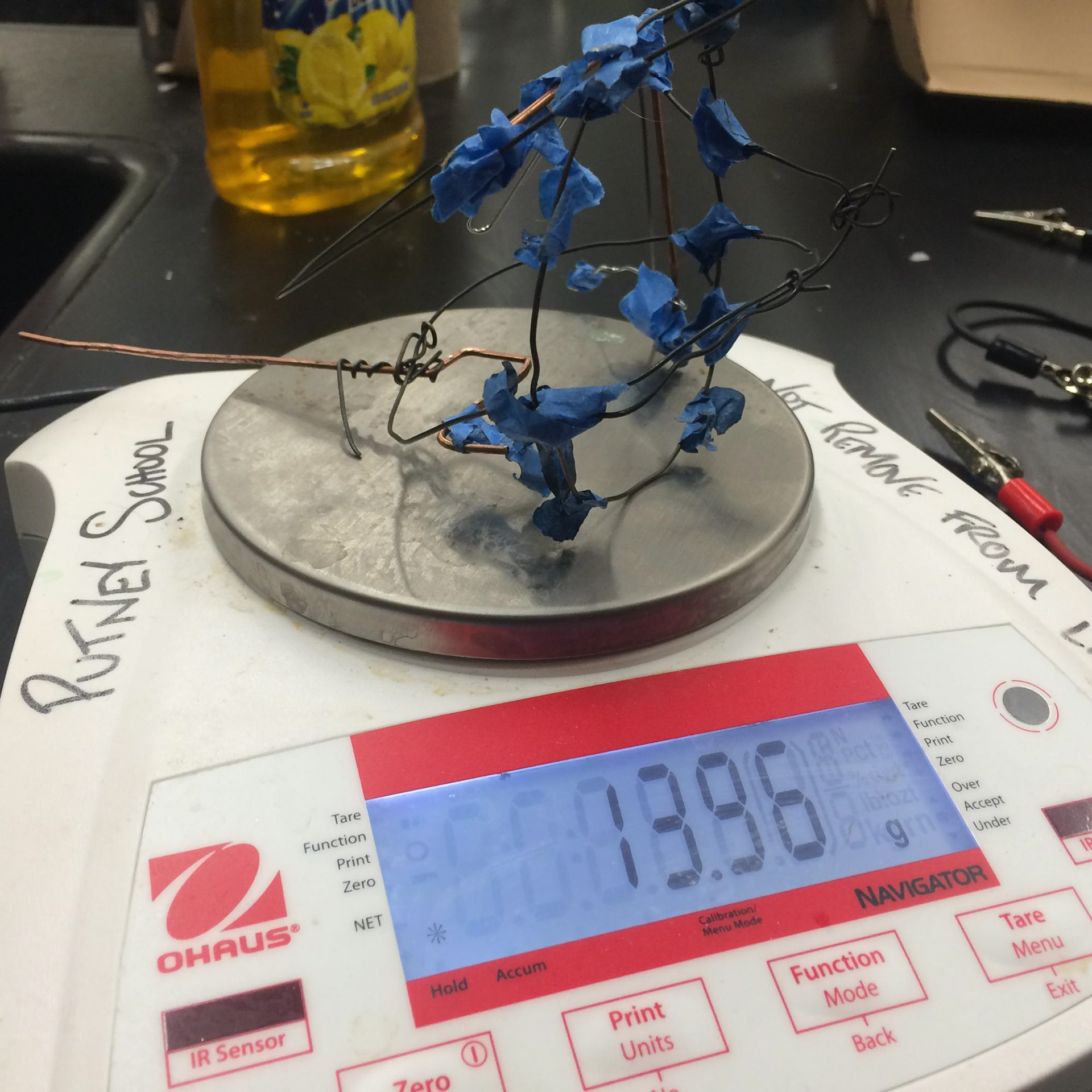
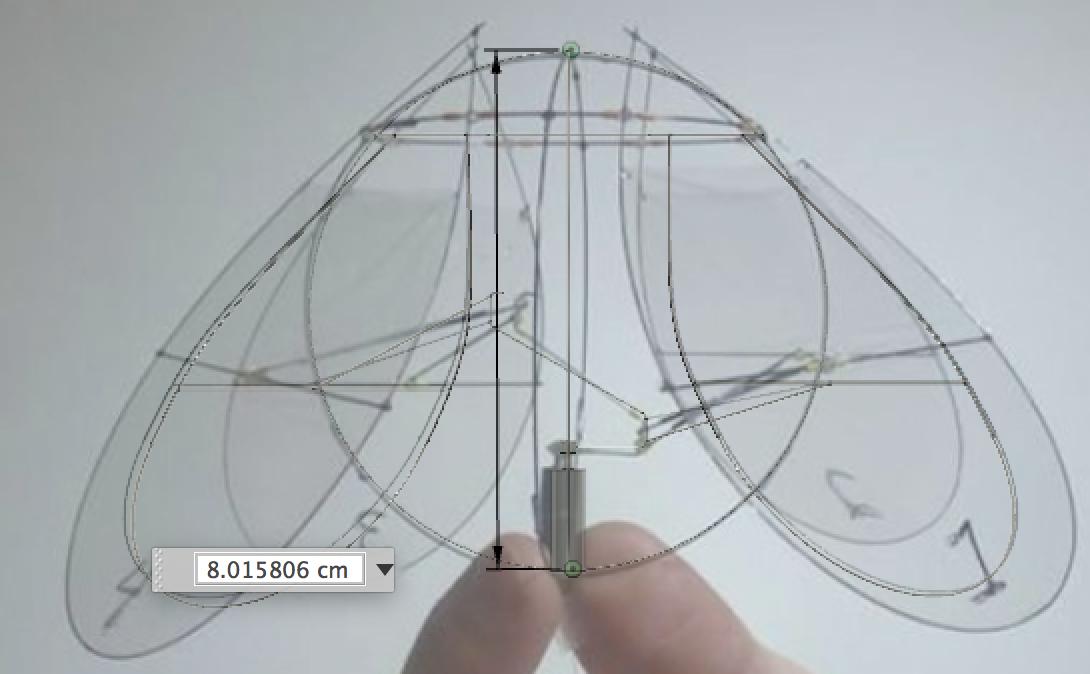
At first I crudely, prototype the model out of wires, but then I realized that wires didn't afford the precision I needed for my project therefore I switched over to digitally prototyping the mechanic. From the photos avaialable online, I reverse engineered the mechanic through multiple iterations.
Correct Crankshaft Dimension versus Iteration with geometrical collision.
Checking for geometric collision from the orthographic top view.
Fabrication:
After the motion and dimension are worked out digitally, a 1:1 CAD drawing is made and then printed as a jig to ensure precision in fabrication.
1:1 CAD drawing.
Making Micro-joints
Working out the joinery was the most complex task, for CAD's concentric and pivot joint does not take into account the real world complexity of fabricating these micro joint. Micro drill bits and pen cartridge is used to fabricate the joints. The body of the jellyfish is composed of joints made out of pencil cartridge and .5mm holes.
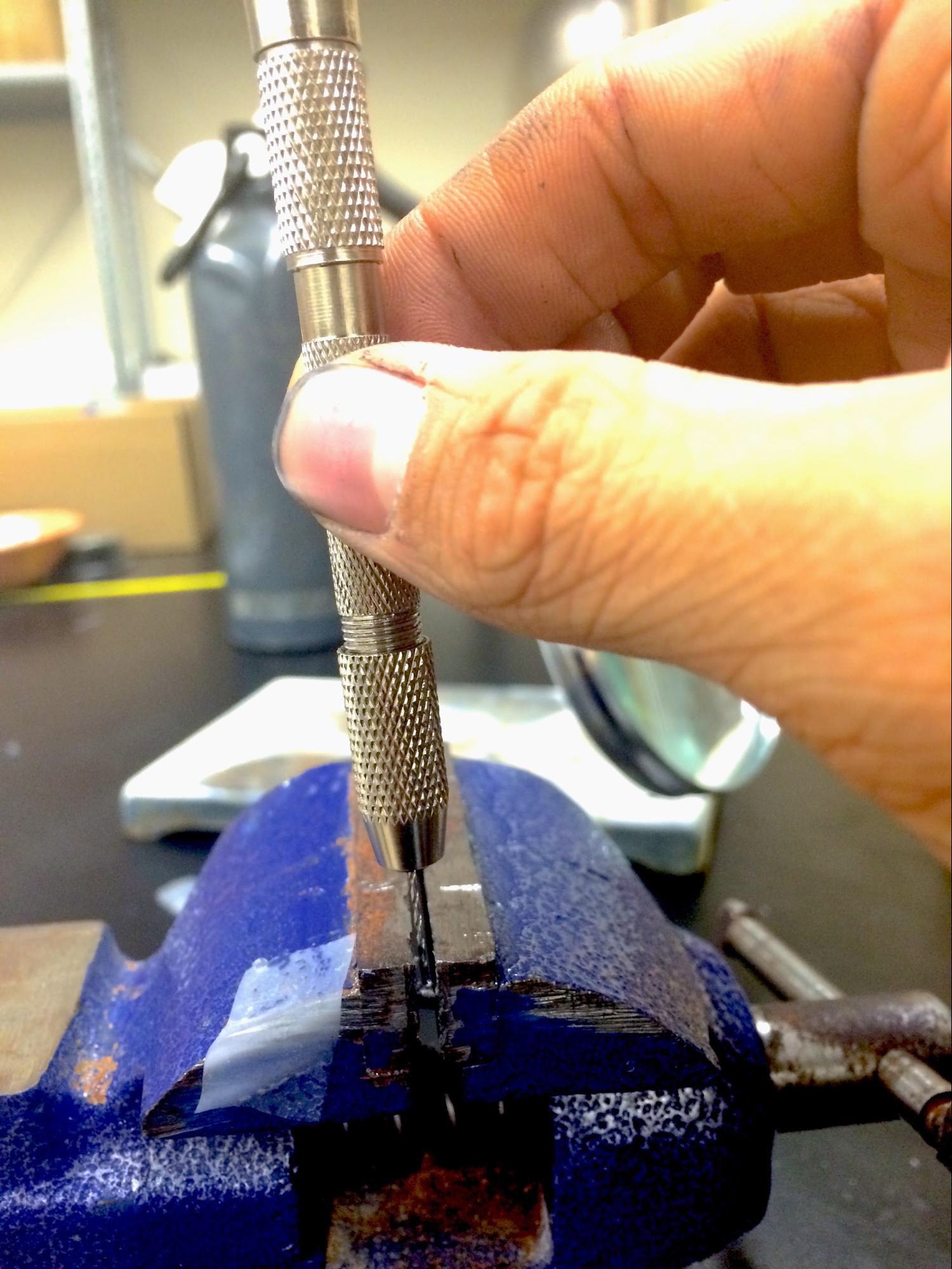
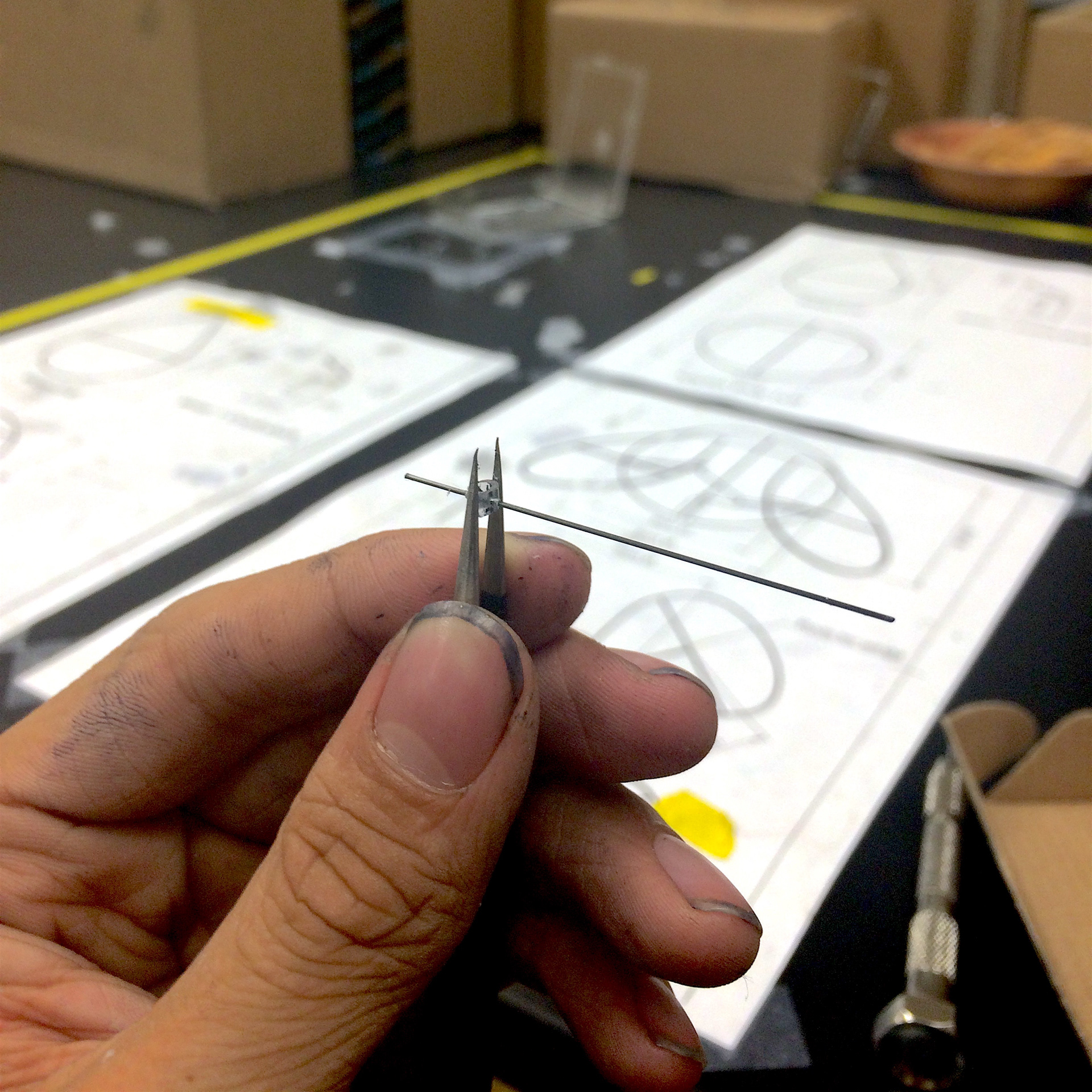
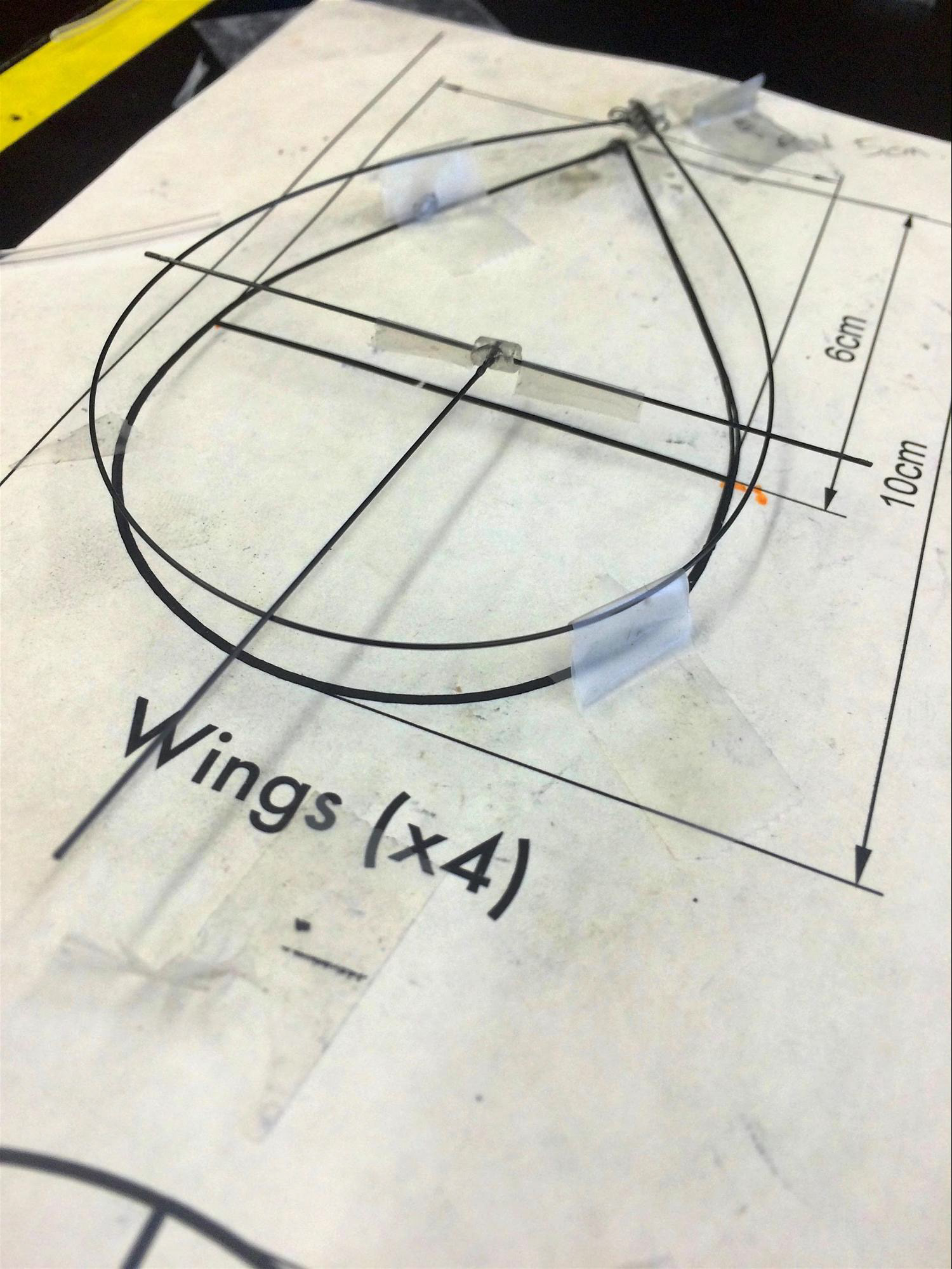
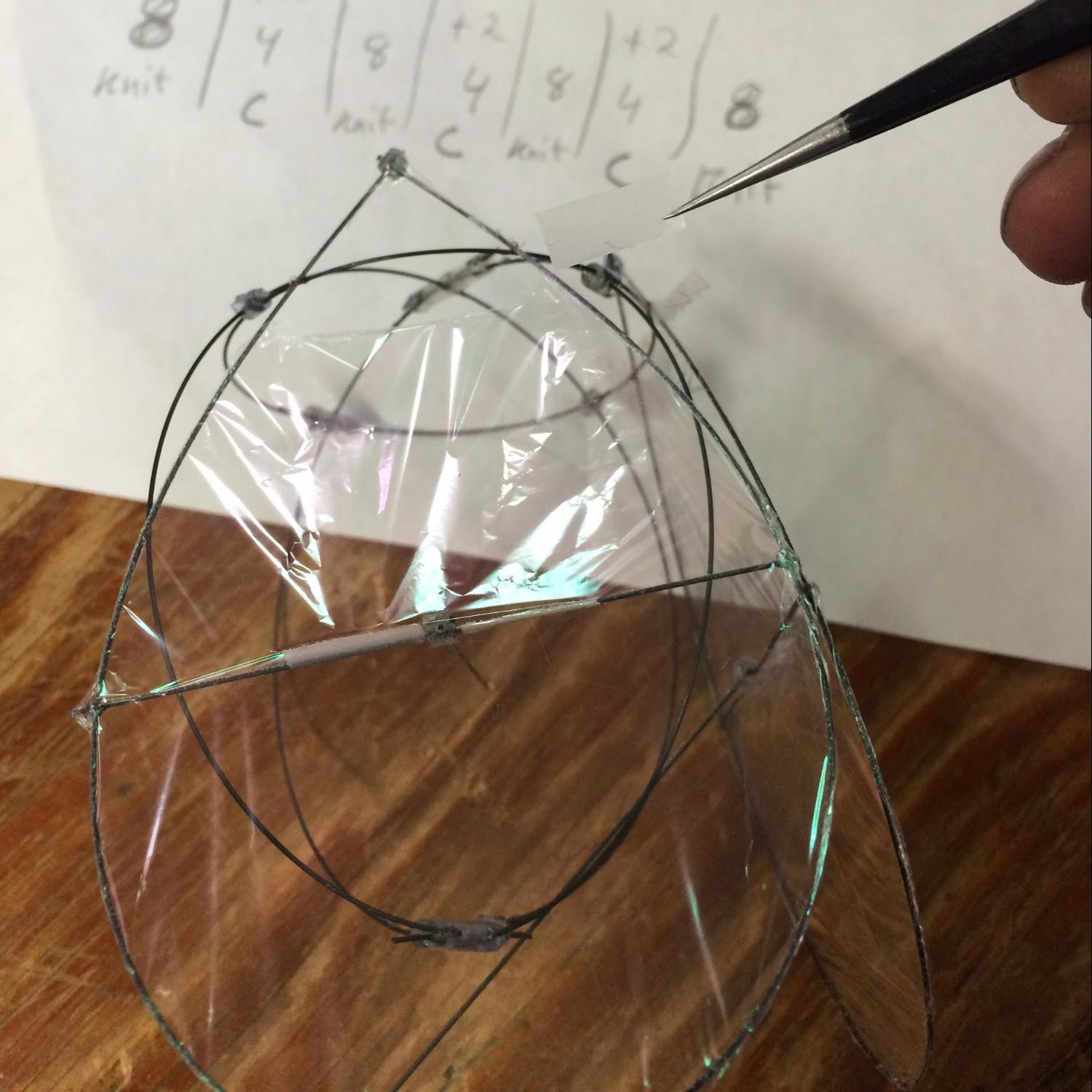
A jig like construction method is used to ensure the accuracy of the model. After securing the wings to the body with ultra-thin copper wires, tape is placed on both side to prevent the joint from lateral motion.
Creating Wings
The wings are built by using spray adhesive to attach the carbon fiber frame to the mylar, and then cutting the mylar by melting it with a soldering rod. Heat is used instead of sharpness to avoid ripping the fragile .5 micron thin mylar.
Because friction will rip the fragile .5 micron mylar, heat is used to cut off excess mylar to make the wings.
Conclusion: